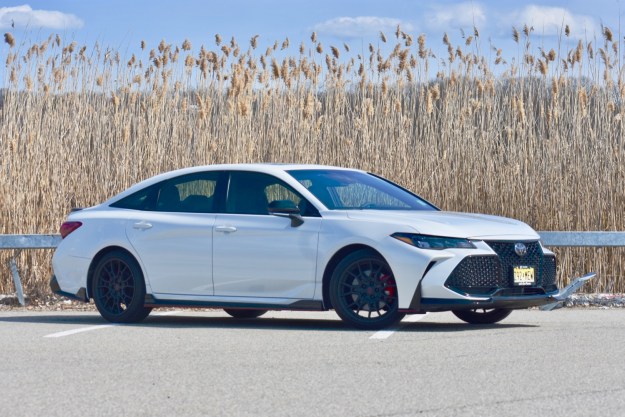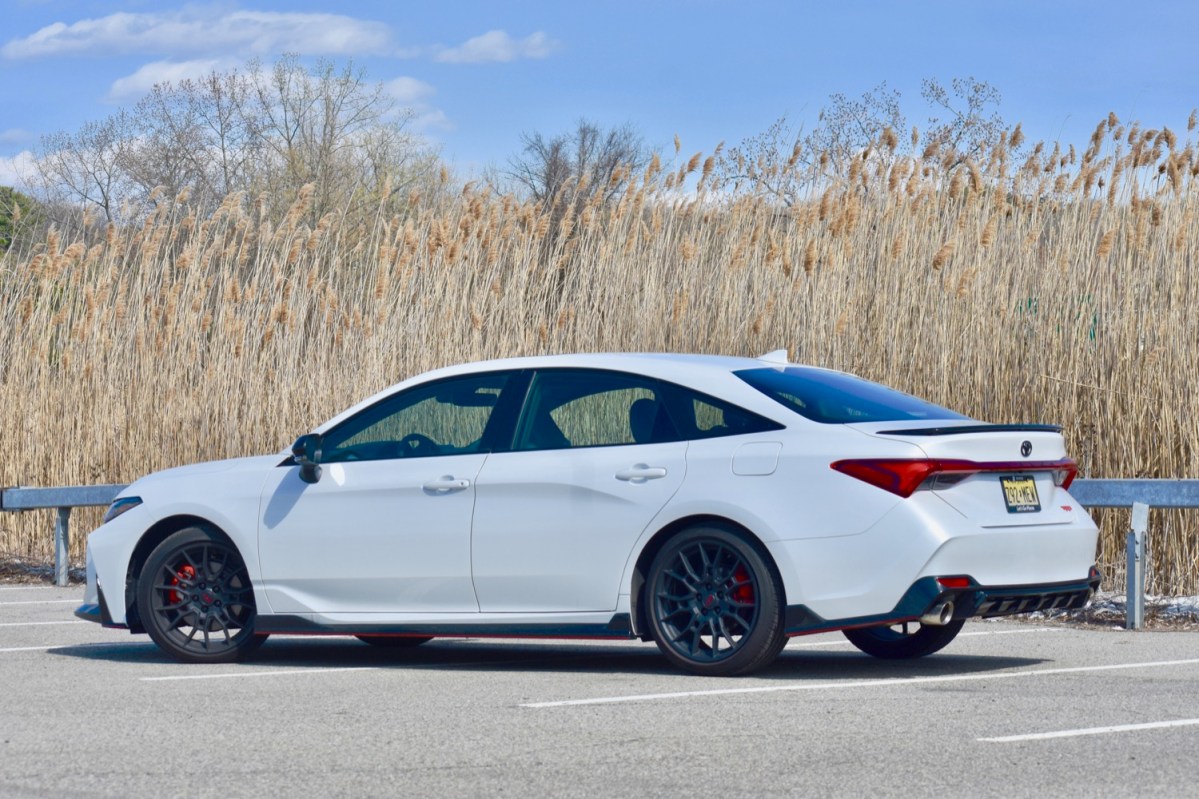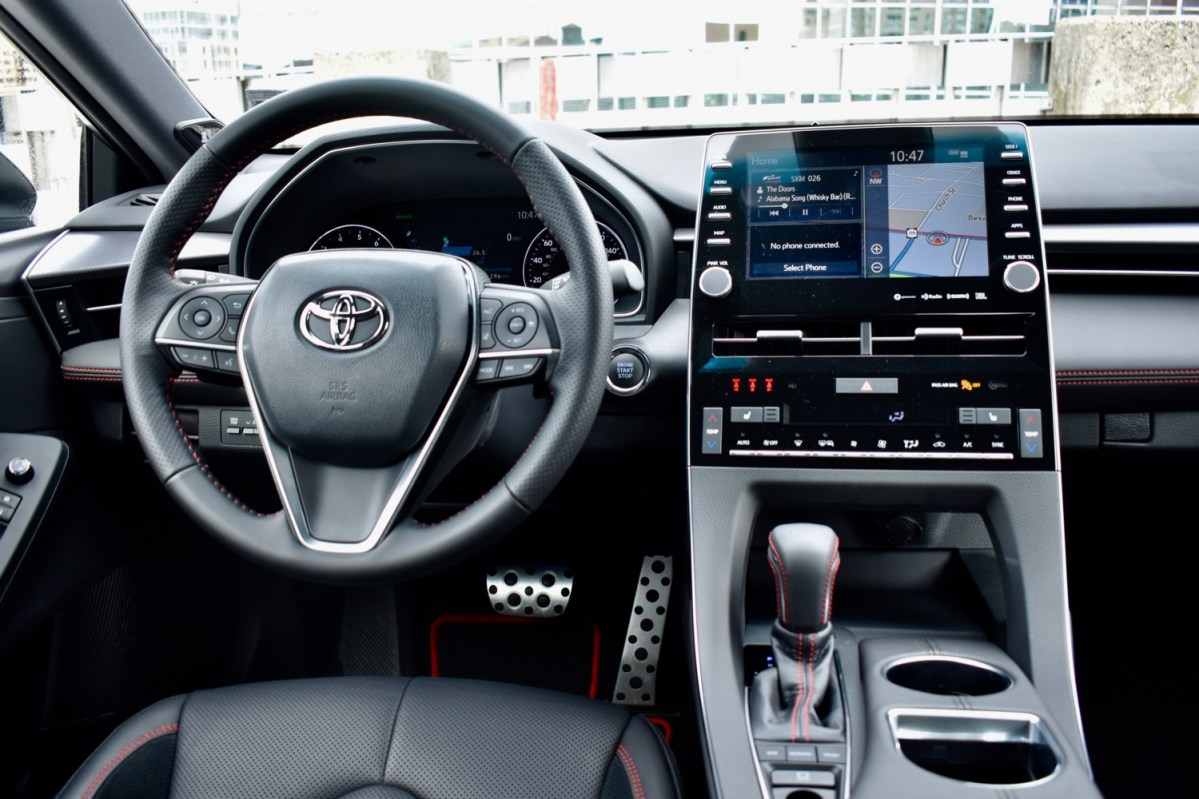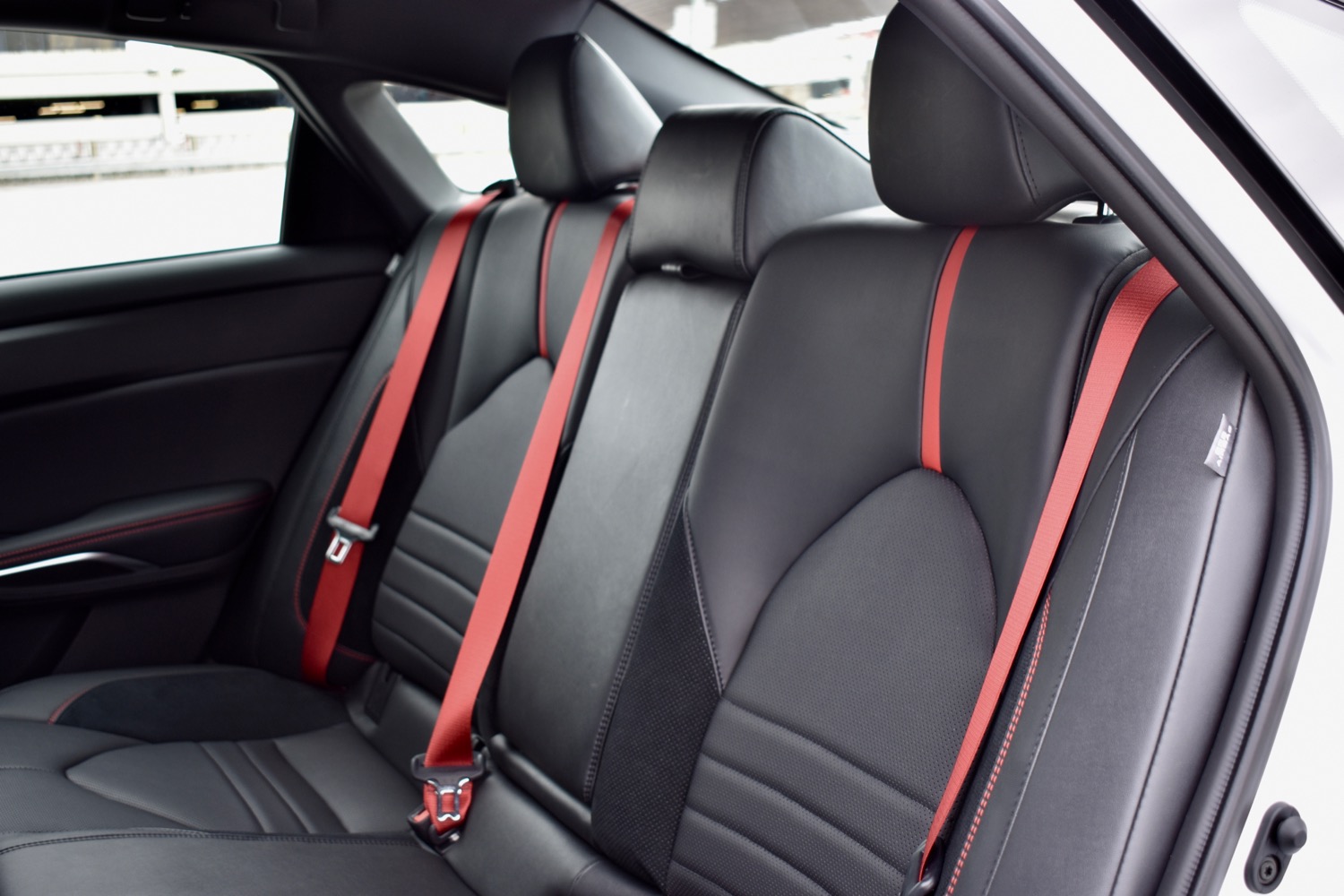
“The 2020 Toyota Avalon TRD is an entertaining full-size sedan, but not a good value.”
- Powerful engine
- Composed chassis
- Spacious interior
- Underwhelming tech
- Unimpressive interior materials
- Performance upgrades don't go far enough
- Poor value
It’s hard to imagine a car currently in production with a less exciting image than the Toyota Avalon. Toyota’s biggest sedan has traditionally catered to an older demographic, emphasizing comfort and space over sportiness and tech. So why does this new Avalon have a TRD badge on its trunk? TRD is short for Toyota Racing Development, after all.
The 2020 Toyota Avalon TRD is an attempt to break out of a stodgy stereotype. Toyota didn’t change anything under the hood of this full-size sedan, but it did give the Avalon TRD stiffer suspension, larger front brakes, and other performance upgrades, as well as sportier styling inside and out.
Those upgrades don’t come cheap. Pricing for the TRD model starts at $43,330. That’s $6,500 more than a base Avalon XLE, and puts the TRD near the top of the trim-level hierarchy. Given the limited nature of its performance upgrades, the TRD was going to have to work hard to justify its price and live up to its billing as the exciting Avalon.
Design and interior
The current-generation Avalon, which was introduced for the 2019 model year, already had fairly extroverted styling as part of Toyota’s ongoing attempt to make its more distinctive. The massive grille carries over from the Avalon XSE model, and the TRD adds a body kit with a new front splitter, side skirts, rear diffuser, and trunk lid spoiler. The TRD also gets model-specific 18-inch wheels. Overall, the car looks like it was designed by an Uber driver who watched too many Fast and Furious movies. But unlike past Avalons, it stands out.
We’re used to seeing traditional wood and leather in Avalon interiors, so it was surprising to open the driver’s door and find seats with suede inserts and red stitching, red seat belts, and aluminum pedal covers. This is the kind of stuff one normally expects to find in a Honda Civic Type R, not a big sedan. That’s not a bad thing, as these boy racer elements give the Avalon TRD the sporty feel Toyota was going for.

It’s just too bad that the materials are so cheap-looking. Despite costing over $40,000, this car did not have real leather seats, and other materials didn’t feel like a significant step up over less-expensive Toyota models.
When you buy an Avalon, you’re really paying for space. Interior volume is a big step up over the midsize Toyota Camry, and compares favorably with other full-size sedans like the Dodge Charger, Kia Cadenza, and Nissan Maxima. The Avalon has more rear legroom than competitors, although the Cadenza and Maxima have a bit more room in front. At 16.0 cubic feet, trunk space is about average for a big sedan, but the Kia Stinger hatchback offers 23.3 cubic feet of cargo space.
Tech, infotainment, and driver assist
The Avalon is Toyota’s flagship car, but that doesn’t come across in terms of its tech. This car has a decent array of tech features, but Toyota could have gone further.
While some Toyota vehicles gained both Apple CarPlay and Android Auto for the 2020 model year, the Avalon is only available with CarPlay (along with Amazon Alexa connectivity). The standard 9.0-inch infotainment screen is easy to reach from the driver’s seat, and is backed up by strategically placed analog controls, but its integration with the dashboard is awkward.

The 7.0-inch display screen wedged between the analog speedometer and tachometer does a good job of providing vital information like gas mileage, but the setup seems a bit dated now that other automakers are offering fully digital instrument clusters. The TRD model gains standard Qi wireless phone charging, but doesn’t have the head-up display offered on Touring and Limited trim levels.
The Avalon has the same standard Toyota Safety Sense-P bundle of driver aids as most of the automaker’s other models. That includes autonomous emergency braking, lane departure warning with steering assist, adaptive cruise control, automatic high beams, blind spot monitoring, and rear cross traffic alert.
Driving experience
The TRD model has the same 3.5-liter V6, eight-speed automatic transmission, and front-wheel drive setup as the base Avalon. Engine output is unchanged at 301 horsepower and 267 pound-feet of torque. That’s about the same as the Avalon TRD’s closest rival, the Nissan Maxima. Like the TRD, the Maxima is a mildly sporty big sedan with front-wheel drive and a 3.5-liter V6 that makes 300 hp and 261 lb.-ft. The Maxima’s continuously variable transmission (CVT) has nothing on the Avalon’s quick-shifting eight-speed automatic, though.
Broaden your horizons, however, and it’s possible to get more horsepower per dollar. For about $6,000 less than the TRD, you can get a Dodge Charger R/T with a 5.7-liter V8 that makes 370 hp and 395 lb.-ft. The Kia Stinger GT is also priced a bit lower than the Avalon TRD. It packs a 3.3-liter twin-turbocharged V6 with 365 hp and 376 lb.-ft. The Dodge and Kia are both rear-wheel drive, and Kia offers all-wheel drive at extra cost.
The Avalon still has plenty of power for a car of its size, though, and the TRD model’s cat-back exhaust system gives the V6 a lovely growl. Toyota also threw more resources into the car’s chassis.
On the road, the relatively minor performance upgrades work, but only to a point.
Most of the TRD upgrades relate to handling. Toyota added thicker underbody braces to increase torsional rigidity, TRD-specific shock absorbers, new stabilizer bars, and new springs that lower the car by 0.6 of an inch. The stabilizer bars and springs increase roll stiffness by 44 percent in front and 67 percent in the rear, according to Toyota, helping to keep the car from flopping around in corners. The TRD also has bigger front brakes than a standard Avalon.

On the road, those relatively minor changes work, but only to a point. The Avalon TRD feels much more composed on a twisty road than a car this big has any right to. The brakes are fantastic, too. But like a person with social anxiety at a party, you get the feeling that the Avalon would rather be doing something else.
While the suspension keeps body roll in check, the TRD doesn’t feel as agile as a Nissan Maxima, which was built using a similar template. That’s likely due to the Avalon’s longer wheelbase, which is great for rear-seat space, but not for corner carving. The Toyota’s front tires were also easily overwhelmed by multitasking. Having to juggle steering, braking, and channeling 301 hp is a lot to ask, which is why performance sedans typically have rear-wheel drive or all-wheel drive. Drive the Avalon back to back with a Kia Stinger, and you’ll see why.
Gas mileage and safety
The TRD treatment doesn’t affect gas mileage ratings. This version of the Avalon is rated at the same 25 mpg combined (22 mpg city, 31 mpg highway) as most other trim levels. Toyota also offers a hybrid powertrain with up to 44 mpg combined, but that can’t be combined with the TRD upgrades. Over a week of driving, we averaged 24.8 mpg, according to the car’s trip computer.
The 2020 Avalon received the highest Top Safety Pick+ rating from the Insurance Institute for Highway Safety (IIHS), and a five-star overall rating from the National Highway Traffic Safety Administration (NHTSA).
Toyota offers a three-year, 36,000-milebasic warranty and afive-year, 60,000-mile, powertrain warranty. The Avalon and other Toyota models have an excellent overall reputation for reliability.
How DT would configure this car
Since the TRD is a specific trim level in the Avalon lineup, there aren’t many configuration decisions to make beyond color. We thought our test car’s white hue made the black grille, wheels, and body kit pop nicely.
But is the TRD the best Avalon to buy? It’s worth noting that the Limited trim level offers more features (including leather seats and a 360-degree camera system) for around the same price. The Limited can also be had with the hybrid powertrain. That combination plays to the Avalon’s strengths better than the sporty TRD.
Our take
The 2020 Toyota Avalon TRD is a good idea with poor execution. It’s possible to make a big sedan into a performance car — just look at the BMW M5 — but Toyota didn’t go far enough with the Avalon TRD. The TRD upgrades make the Avalon better to drive (and to look at), but they don’t transform it.
If you want four doors, lots of space, and a little fun, other cars offer more for the money. For the base price of the Avalon TRD, you could have the most expensive Nissan Maxima. The Nissan is not without its flaws, but it is a better execution of the idea Toyota was aiming for. The Maxima has less interior space than the Avalon, but its interior also feels more upscale. While its saddled with a slow-reacting CVT, the Maxima also feels more at home on twisty roads.
Similar money could also buy a Kia Stinger GT, with more power and better handling than the Toyota, or a Dodge Charger R/T, a bona fide muscle car with a Hemi V8 under the hood. The Avalon TRD is cool and different, but so are these cars. They also have more substance to back up their style.
Toyota’s Avalon just isn’t built for aggressive driving, and no tweaks can fix that. If you want a really nice Avalon, the XLE model is the way to go. If you want a big sedan that looks more aggressive and moves at a quicker pace, you should buy a different car.
Should you get one?
No. It’s poor value for the money.



